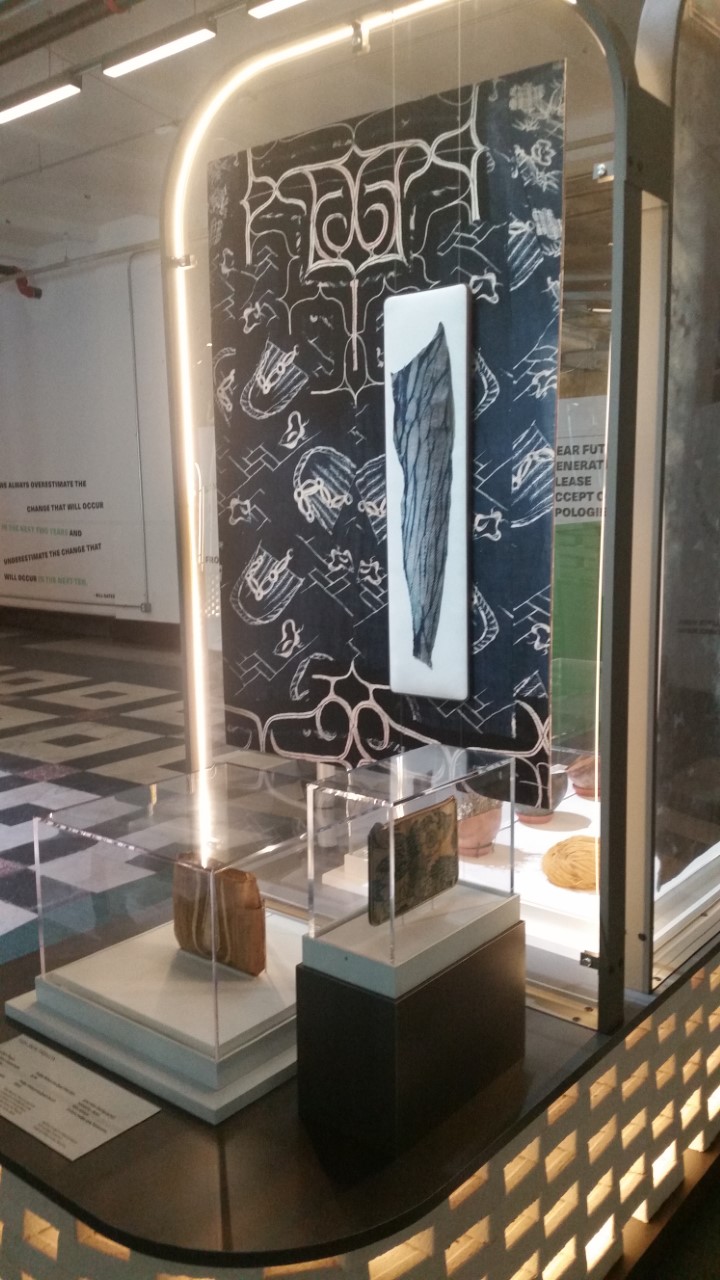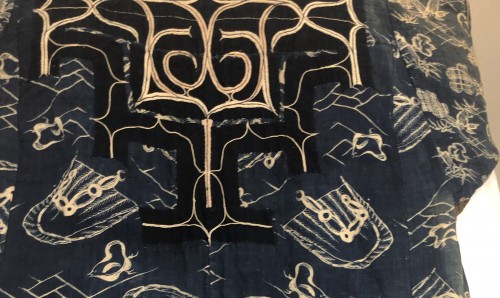
SMITHSONIAN INSTITUTION FUTURES EXHIBITION
The idea behind the fish skin clutch that it is currently being displayed at the FUTURES exhibition draws on Indigenous Arctic Fishskin Heritage connecting anthropology, ethnography, craftsmanship and fashion sustainability, learning from the Arctic Indigenous peoples’ traditional fishskin craft practices. The artefacts that have inspired me are objects of everyday life such fishskin pouches, gloves, and boots, part of the Anthropology Division at the NMNH. During my previous Fulbright scholarship at the ASC with William Fitzhugh and Stephen Loring.
Under the guidance of Stephen Loring, I was able to dive on the NMNH collection and access Arctic and Sub Arctic artefacts outside of my research topic that have deeply influenced my artistic practice. Among the artefacts at the NMNH that have influenced my work, there is the traditional Ainu robe (Attush) produced with katazome indigo dyed cotton, traded from the Japanese. The indigenous people of Hokkaido known as Ainu, produced their clothing throughout history with materials such as elm bark fibres and fishskin. In later years, contact with the Japanese included trade for textiles such as indigo dyed cotton. They often used old Japanese kimonos, to which they added dark strips around the neck, front opening, sleeves, and hem.
This particular Attush inspired me to develop a series of katazome indigo dyed fishskin samples and accessories during my following fieldtrip in the mountainous area of Kanagawa Prefecture, where Indigo Master Takayuki Ishii runs an indigo dyeing company using traditional techniques and raw materials.
These katazome dyed fish skins are part of a study hypothesizing what would have happened if during the Meji era, the Japanese instead of forcing the Ainu through cultural assimilation to shift from hunting, fishing, and gathering to agriculture had brought their own traditions like katazome indigo dyeing and had blend them with the Ainu tradition of creating clothes and accessories with fishskin.
https://ocean.si.edu/human-connections/fish-skin-fashion-indigenous-knowledge-runway
 © 2019 Jay Zaccheus.jpg)




